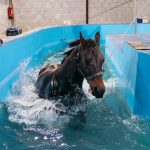The UK’s energy landscape is transforming, with an increasing shift towards renewable energy sources. One of the most promising of these is wind energy, particularly offshore floating wind farms. While they hold immense potential for clean, renewable power, their deployment is not without challenges. This article delves into these challenges, from the complex installation to the high costs and technical hurdles. We’ll also explore the role of vital components like turbines, mooring systems, and marine vessels in this emerging industry.
Technological Challenges and the Role of Turbines
The first set of challenges comes from the technology itself. Offshore floating wind farms are a relatively new development in the energy sector. They use wind turbines mounted on floating structures, which are tethered to the sea floor via a mooring system. These systems differ significantly from their onshore counterparts, and the technology is still maturing.
A découvrir également : Portuguese NIF: Everything you need to know before you move
A key concern for offshore wind energy is the performance and reliability of turbines. Turbines must withstand harsh marine conditions, so they must be robust and durable. Moreover, they should be efficient enough to generate a substantial amount of power. Given that the technology is still evolving, significant research and development are required to design turbines that can meet these specifications.
Additionally, the manner in which these turbines are connected to the electrical grid is also a significant technical challenge. The power generated needs to be transported back to the mainland, which requires undersea cables and a way to balance the supply with the demand.
Avez-vous vu cela : How to Design a Personalized Eco-Friendly Wedding in the UK Countryside?
Installation and Mooring Systems: A Complex Task
Installation of offshore floating wind farms presents another major challenge. It requires the use of heavy-duty marine vessels and cranes, which can operate in rough seas and high winds. The turbines, once assembled, are incredibly large and heavy, multiple times the size of the London Eye. The process of transporting these turbines to the installation site and then securely mounting them onto the floating platforms is both laborious and fraught with risks.
Furthermore, the mooring system, which anchors the floating structures to the seabed, is a critical component that adds to the complexity. It must be strong enough to hold the structures in place, even in extreme weather conditions. Yet, it needs to allow enough range of motion for the floating platform to move with the waves. Designing such a mooring system requires a deep understanding of marine engineering and the local sea conditions.
The High Costs and Financial Challenges
The financial aspects of deploying offshore floating wind farms are yet another impediment. The capital costs for offshore wind projects are considerably higher than for onshore wind due to the increased complexity and the need for specialized equipment and vessels.
These high upfront costs can make it difficult to secure funding for such projects. While the potential power capacity of offshore wind is substantial, the financial returns are not immediate. It takes several years of operation to recoup the initial investment, which can deter investors looking for quick returns.
Moreover, the operational and maintenance costs of offshore wind farms are also higher than those of onshore wind farms. This is due to the harsh marine environment, which accelerates wear and tear, and the logistical challenges of accessing the turbines for routine maintenance and repairs.
Regulatory and Environmental Considerations
Finally, regulatory and environmental considerations pose another set of challenges for offshore wind farm deployment. The UK has stringent regulations for offshore activities to protect marine life and the coastal environment. Planning and obtaining permits for offshore wind projects can thus be a lengthy and complex process.
Furthermore, there are potential environmental impacts to consider. While wind energy is clean and renewable, the installation and operation of offshore wind farms can disrupt marine life. For instance, the noise from constructing the turbines can disturb marine mammals, and the turbines themselves can pose a risk to migratory birds.
Despite these challenges, the potential benefits of offshore floating wind farms are substantial. They can generate enormous amounts of clean energy, reducing our reliance on fossil fuels and contributing to the fight against climate change. As technology advances and the industry matures, it’s likely that solutions to these challenges will emerge, paving the way for a future where offshore wind plays a major role in the UK’s energy mix.
The Future Prospects and Potential Solutions
Despite the numerous challenges faced in deploying offshore floating wind farms, the future prospects remain bright. The increasing global focus on renewable energy and the need to combat climate change has led to a surge in demand for wind energy, especially offshore types. This growing demand is driving significant research, development, and innovation in the sector.
One area of focus is on improving turbine technology. To counter the technological challenges, researchers are working on designing more efficient and robust turbines that can withstand harsh marine conditions. Improved materials and designs, reinforced structures, and advanced control systems can enhance the performance and reliability of wind turbines considerably.
The installation process and mooring systems are other areas of focus. Innovations in marine engineering and the use of advanced materials can lead to the development of more effective mooring lines and systems. For example, the Carbon Trust is running a competition for the development of new types of mooring systems for floating wind farms, with the aim of reducing capital and operational costs.
Financially, more favourable regulatory policies and financial incentives can help overcome the cost barriers. Governments can play a significant role by providing subsidies and tax incentives for offshore wind projects. Additionally, the development of large-scale projects can lead to economies of scale, reducing the cost per unit of energy produced.
Furthermore, to mitigate environmental impacts, careful planning and site selection can play a critical role. Areas with lower ecological sensitivity, careful timing of construction to avoid periods of high wildlife activity, and the use of noise-reducing technologies can limit the disturbance to marine life.
Conclusion: Navigating the Path Towards Renewable Energy
While it is true that the deployment of offshore floating wind farms in the UK faces significant challenges, it is equally important to remember the bigger picture. The transition to renewable energy is not just about overcoming technical or financial obstacles. It’s about paving the path for a sustainable future, where energy security is guaranteed, carbon emissions are minimized, and the impact of climate change is mitigated.
The challenges of implementing floating wind farms are not insurmountable. As the technology matures, and with the right blend of policy support, investment, and commitment to research and development, we can expect these hurdles to diminish. The future of wind energy in the UK looks promising, with potential technological advances and environmental benefits that can outweigh the challenges.
While the journey ahead might be long and windy, the destination – a future powered by clean, green, and renewable energy – is well worth the efforts. The UK, with its vast coastal resources and strong commitment to carbon reduction, is indeed in a prime position to lead the world in harnessing the power of offshore wind. As we move forward, it’s crucial not only to navigate the challenges but also to seize the opportunities that lie ahead in this burgeoning sector of renewable energy.











